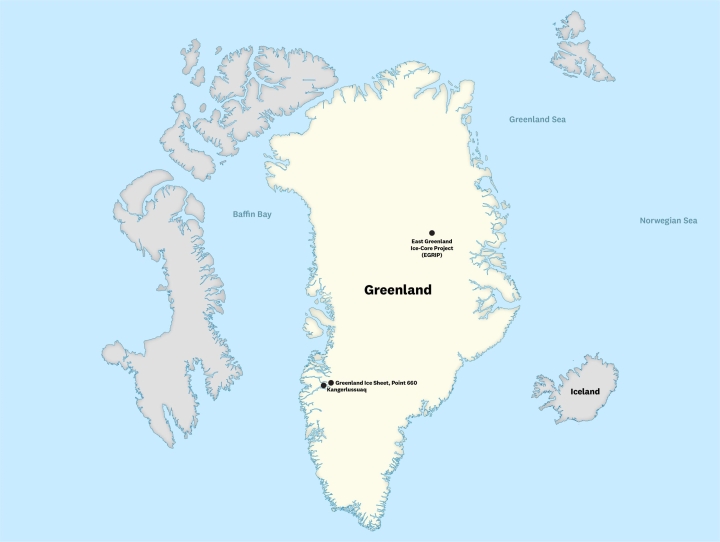“The Small Things That Run the World”
Down the hill from Ross and Spickard, DeSiervo, Stendhal, and Ayres suggest studying Greenland’s increasingly abundant mosquito population. “Why are they important to this ecosystem?” DeSiervo asks, “and how are they impacted by climate change?
“Here’s one of our traps,” she says, holding up a cylinder that emits carbon dioxide. “The mosquitoes are attracted to the CO₂ and then get sucked in.”
Although they’re already scratching bites from voracious Arctic mosquitoes (which can penetrate even thick wool socks), a group of students decide to tag along, in the coming days, with Culler, DeSiervo, and Stendhal as they head to ponds to harvest traps and sweep the ground for insects.
In 10 years of field research in Greenland, Culler has found that, as the climate changes, mosquitoes are emerging earlier in the spring and maturing faster. For now, she says, they are reproducing fast enough to sustain their population. And that’s important to Greenland’s ecosystem, because they play a role in pollination and are also food for other organisms. But mosquitoes could be in trouble, Culler says, because some of the ponds where they lay their eggs are disappearing, and their blood meals, such as caribou and musk oxen, are scarce in the vast tundra landscape and under threat from environmental change.
“I always argue that it’s the small things, the little things we don’t see right away, that actually run the world,” she says.
In 10 years of field research in Greenland, Culler has found that, as the climate changes, mosquitoes are emerging earlier in the spring and maturing faster. For now, she says, they are reproducing fast enough to sustain their population. And that’s important to Greenland’s ecosystem, because they play a role in pollination and are also food for other organisms. But mosquitoes could be in trouble, Culler says, because some of the ponds where they lay their eggs are disappearing, and their blood meals, such as caribou and musk oxen, are scarce in the vast tundra landscape and under threat from environmental change.
“I always argue that it’s the small things, the little things we don’t see right away, that actually run the world,” she says.


























